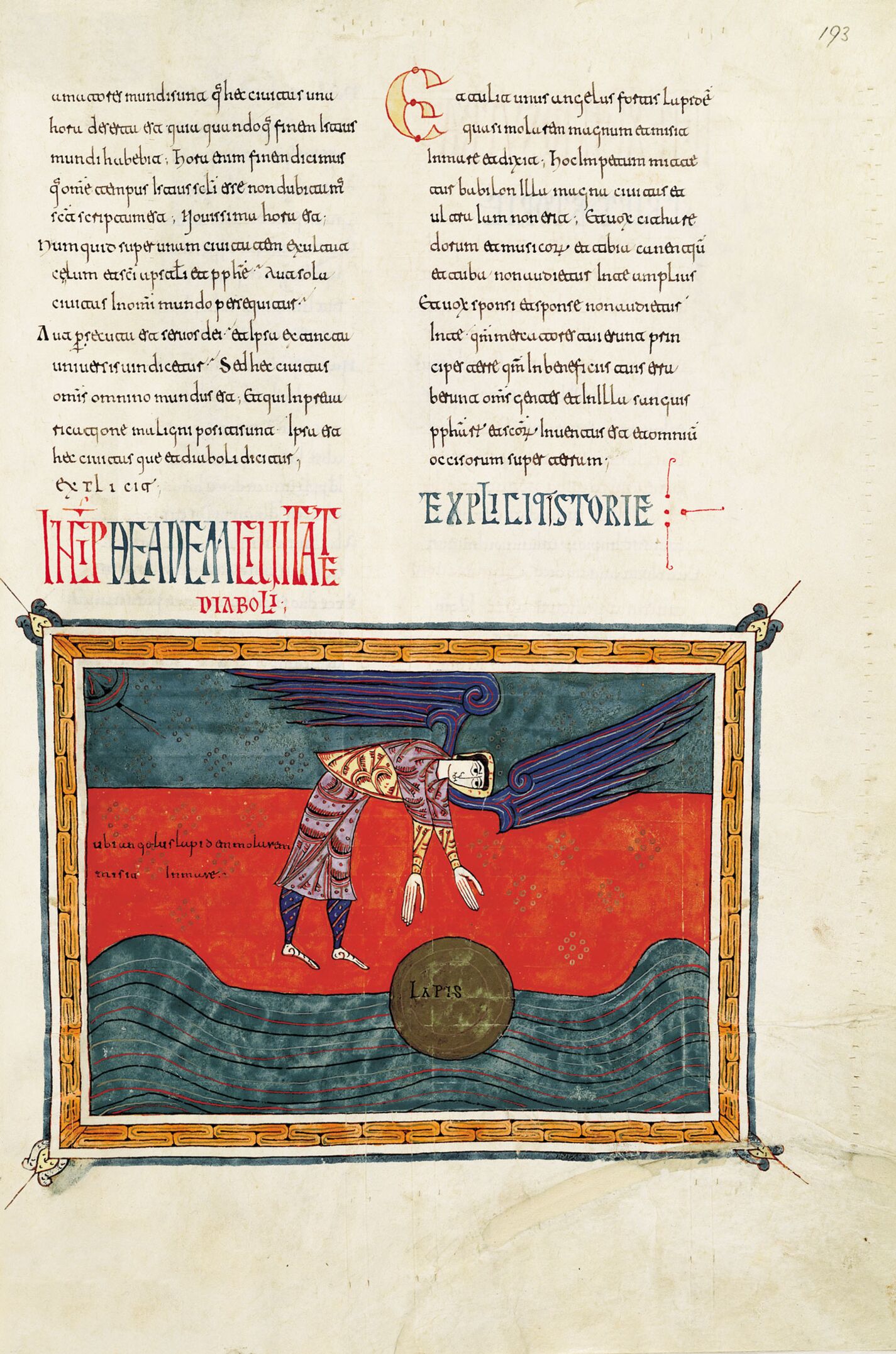f. 193r, The angel casts the mill stone into the sea
Here we have yet another quite small illustration lacking any particular creativity. The illustrator has merely repeated the usual composition of an angel descending in a contrived pose and casting the millstone into the sea, by way of an example of the punishment in store for Babylon. The sea is suggested by means of a blue surface covered by wavy red and black lines endowing it with a certain plasticity. Ubi angelus lapidem molarem / misit in mare reads the text describing this action. The blue colour matches the azure in the top band, highlighting the middle, red band. The huge stone is identified by the word LAPIS, which is quite unusual in the legends in the Silos Beatus. Although the legend is the same as the ones in Morgan (f. 205v), Valcavado (f. 170r), Seu d’Urgell (f. 176r) and Ferdinand I (f. 236v), the position of the angel is more similar to the last three since he is shown standing in Morgan.
The initial E[t tulit unus angelus...] has a simple structure and is of the rounded type with side strokes ending in tiny triangles. Outlined in red with a yellow ground.
Ángela Franco Mata
(Head of the Department of Mediaeval Antiquities of the Museo Arqueológico Nacional)

f. 193r, The angel casts the mill stone into the sea
Here we have yet another quite small illustration lacking any particular creativity. The illustrator has merely repeated the usual composition of an angel descending in a contrived pose and casting the millstone into the sea, by way of an example of the punishment in store for Babylon. The sea is suggested by means of a blue surface covered by wavy red and black lines endowing it with a certain plasticity. Ubi angelus lapidem molarem / misit in mare reads the text describing this action. The blue colour matches the azure in the top band, highlighting the middle, red band. The huge stone is identified by the word LAPIS, which is quite unusual in the legends in the Silos Beatus. Although the legend is the same as the ones in Morgan (f. 205v), Valcavado (f. 170r), Seu d’Urgell (f. 176r) and Ferdinand I (f. 236v), the position of the angel is more similar to the last three since he is shown standing in Morgan.
The initial E[t tulit unus angelus...] has a simple structure and is of the rounded type with side strokes ending in tiny triangles. Outlined in red with a yellow ground.
Ángela Franco Mata
(Head of the Department of Mediaeval Antiquities of the Museo Arqueológico Nacional)